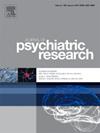K-12人群中药物相关自杀意念:FDA不良事件报告系统(FAERS)数据库的现实世界药物警戒研究
IF 3.2
2区 医学
Q1 PSYCHIATRY
引用次数: 0
摘要
K-12人口是指从幼儿园到12年级,主要年龄在6-17岁的个人。药物相关自杀意念(SI)在K-12人群中是一个主要问题。本研究旨在利用FDA不良事件报告系统(FAERS)数据库确定与K-12人群SI风险增加相关的药物。方法我们从2004年第一季度到2023年第三季度的FAERS数据库中提取了6-17岁以药物为主要嫌疑(PS)的SI病例。我们进行了描述性分析、歧化分析和亚群分析。结果纳入有效病例4779例;男性占52.75%,女性占45.66%。15 ~ 17岁为主要年龄组,占43.92%。病例报告的高峰年份是2019年。孟鲁司特是最常见的药物。四种最常见的症状包括注意缺陷多动障碍、抑郁症、痤疮和哮喘。比例分析强调了21种药物可能与SI风险增加相关,艾氯胺酮显示出最高的信号(报告优势比,ROR = 103.49)。亚组分析确定了11种药物在两性中均有升高的危险信号。孟鲁司特在男性中的信号最高(ROR = 12.64),艾氯胺酮在女性中的信号最高(ROR = 129.50)。累计90天和360天内SI的发生率男性分别为51.6%和76.9%,女性分别为58.8%和85.3%。结论本研究提供了K-12人群中与特定药物相关的潜在SI风险的证据。需要进一步的研究来证实这些发现。本文章由计算机程序翻译,如有差异,请以英文原文为准。
Drug-related suicidal ideation in the K-12 population: a real-world pharmacovigilance study of the FDA adverse event reporting system (FAERS) database
Objective
The K-12 population refers to individuals, primarily aged 6–17, from kindergarten through 12th grade. Drug-related suicidal ideation (SI) in the K-12 population is a major concern. This study aims to identify medications linked to increased SI risk in the K-12 population using the FDA Adverse Event Reporting System (FAERS) database.
Methods
We extracted cases of SI in individuals aged 6–17 years where medications were the primary suspect (PS) from the FAERS database, spanning from the first quarter of 2004 to the third quarter of 2023. We conducted descriptive analysis, disproportionality analysis, and subgroup analysis.
Results
Our analysis included 4,779 valid cases; 52.75 % were male and 45.66 % were female. The predominant age group was 15–17 years, accounting for 43.92 % of cases. The peak year for case reports was 2019. Montelukast was the most common drug. The four most common indications included attention deficit hyperactivity disorder, depression, acne, and asthma. Disproportionality analysis highlighted 21 drugs as potentially associated with increased SI risk, with esketamine displaying the highest signal (Reporting Odds Ratio, ROR = 103.49). Subgroup analysis identified eleven drugs with elevated risk signals in both genders. Montelukast presented the highest signal in males (ROR = 12.64), and esketamine in females (ROR = 129.50). Cumulatively, the incidence of SI within 90 and 360 days was 51.6 % and 76.9 % in males, and 58.8 % and 85.3 % in females, respectively.
Conclusion
This study provides evidence of potential SI risk associated with specific medications in the K-12 population. Further research is necessary to confirm these findings.
求助全文
通过发布文献求助,成功后即可免费获取论文全文。
去求助
来源期刊

Journal of psychiatric research
医学-精神病学
CiteScore
7.30
自引率
2.10%
发文量
622
审稿时长
130 days
期刊介绍:
Founded in 1961 to report on the latest work in psychiatry and cognate disciplines, the Journal of Psychiatric Research is dedicated to innovative and timely studies of four important areas of research:
(1) clinical studies of all disciplines relating to psychiatric illness, as well as normal human behaviour, including biochemical, physiological, genetic, environmental, social, psychological and epidemiological factors;
(2) basic studies pertaining to psychiatry in such fields as neuropsychopharmacology, neuroendocrinology, electrophysiology, genetics, experimental psychology and epidemiology;
(3) the growing application of clinical laboratory techniques in psychiatry, including imagery and spectroscopy of the brain, molecular biology and computer sciences;
 求助内容:
求助内容: 应助结果提醒方式:
应助结果提醒方式:


